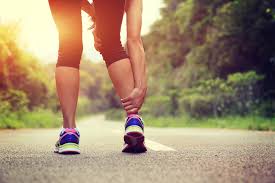Throughout the Spring and Summer months, we enjoy the warmer weather and the chance to exercise outdoors. The Adelaide Plains, Kaurna country is known for its heatwaves, and it’s important to remember that the risks of heat related illness increases when exercising during the hot and humid weather. This is because you may not be able to produce enough sweat to cool your body down enough, and the higher humidity may prevent the evaporation of sweat. We have some tips to make sure that you get the most out of your exercise routine and to help you prevent this from occurring.


How Does Your Body Control Its Temperature?
Our bodies attempt to control their temperature through a process called thermoregulation. In terms of reducing heat, this process involves the dilation and increase of blood flow to the little blood vessels in the capillaries. When this occurs, our body is trying to reduce the amount of heat that we’re holding in our core to a place where it can be transferred out of our body. This causes the sweating, erythema – skin redness, and urination, all being ways our body tries to maintain homeostasis.
Stay Hydrated
2 hours prior to your workout drink 2 glasses (500ml) of water. And continue drinking regularly throughout.
2-3 glasses of water (500-700ml) will keep you hydrated for exercise that lasts approximately 60 minutes or longer.
Adjust your workout
If your regular exercise routine involves jogging or walking, you may want to change your pace, slowing it down to accommodate the warmer weather.
As your body becomes accustomed to the heat you can begin to increase the pace and length of your workout.

Avoid The Hottest Part Of The Day
To avoid the risk of heat illness throughout summer, it’s important to avoid exercising during the hottest part of the day, this is between 12pm-3pm. The cooler early hours of the morning are a good time to exercise when it isn’t too hot, alternatively you can take advantage of the daylight saving hours, exercising in the evenings.
Wear Appropriate Clothing
It’s important to wear sports clothing that is loose and light, darker colours retain the heat, whilst tighter fitting heavier clothing will also heat you up. Choosing loose light coloured clothing allows the movement of air over your skin, helping to keep your body temperature down.

Consider The Sun
Remember to apply 50 plus sunscreen regularly whilst you’re exercising, especially if it’s over a long period of time. Wear a hat, the most effective type of hat that can be worn to block out the sun is a
wide-brimmed hat.
Be Aware Of Your Boundaries, Observe & Interact
Be aware of the heat and listen to how your body is feeling. If you experience any of the below make sure that you find a cool spot as soon as you can.
Know your limitations, and listen to your body.
Symptoms Of Heat Stroke
- High body temp over 40 degrees – burning to the touch, like a fever
- Weakness
- Light-headedness
- Dizziness
- Paling of the skin
- Headache
- Shallow and rapid respiration (breathing)
- Muscle cramps
- Nausea or vomiting
- Rapid heartbeat
- Altered mental state or behavior can include symptoms such as confusion, agitation, slurred speech, irritability, delirium, seizures, and coma. Watch out for these.
Be aware of your companions
If you notice your friends or training companions becoming disorientated, vague or uncoordinated encourage them to seek shade, hydration and recovery.
Our Physios are able to provide sports Physiotherapy treatment for you and your family, to find out more about the services that we provide press the button that’s below.
This blog was written by Nicole Brammy from the Gawler Place Physio practice.
